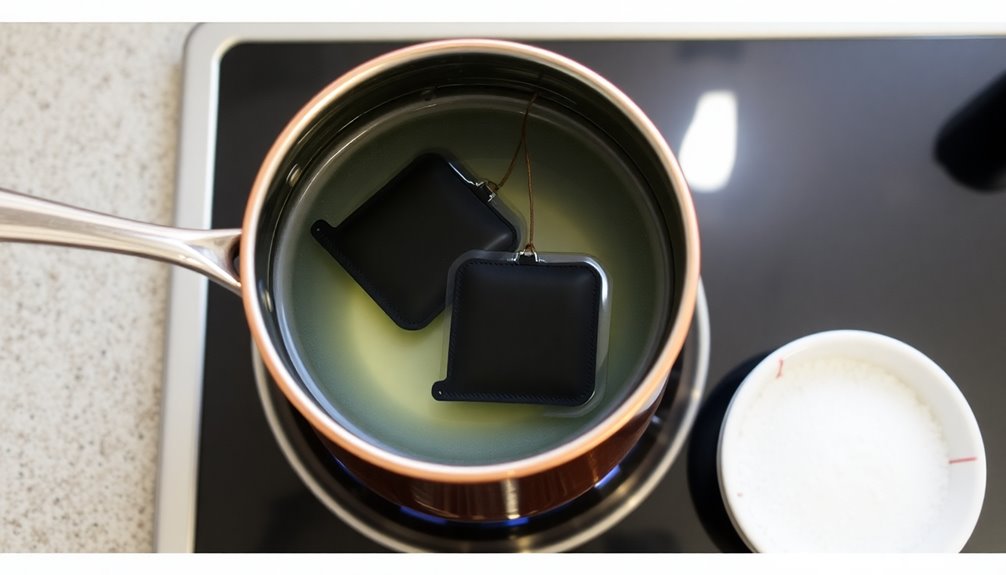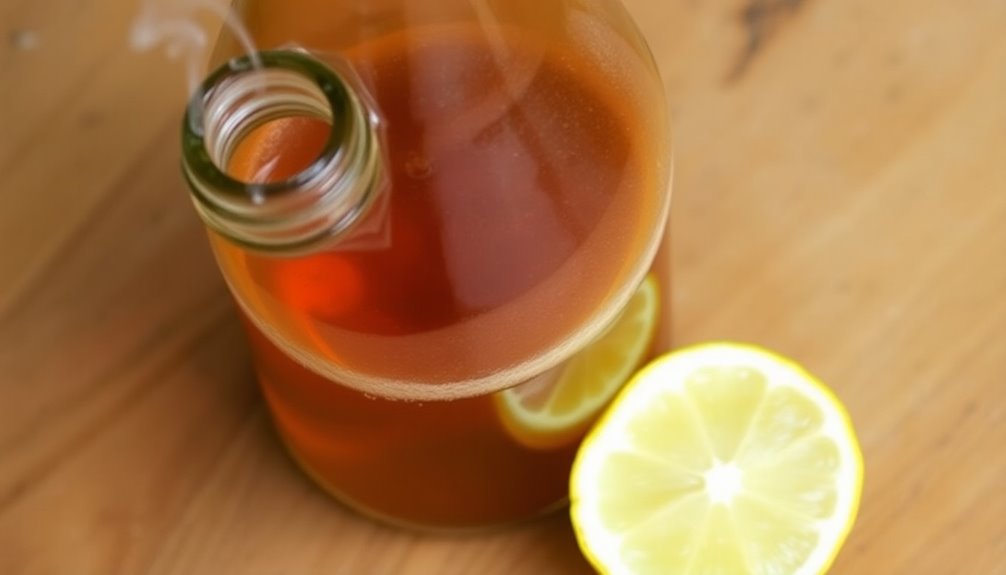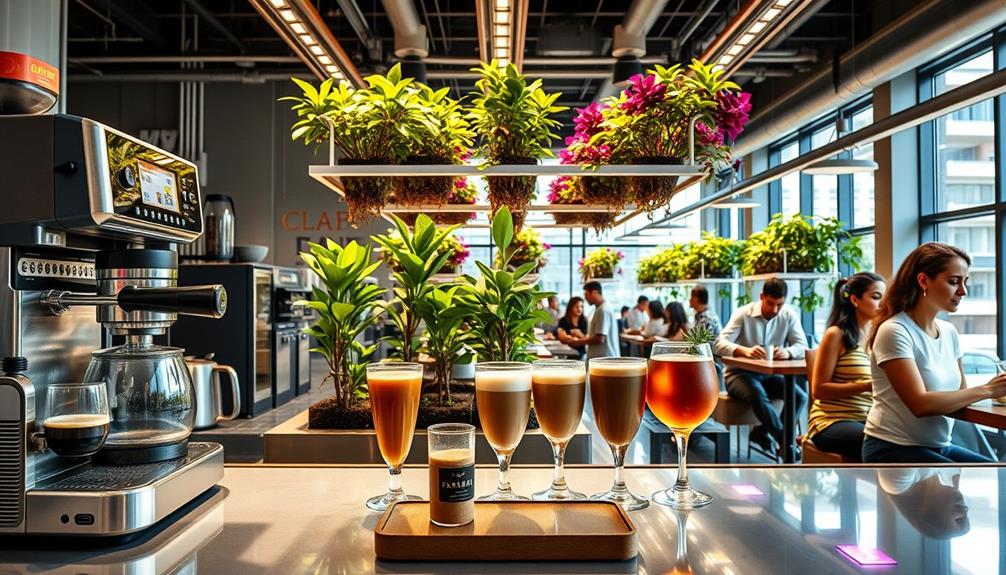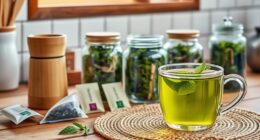Making homemade kombucha doesn't require a store-bought starter tea. You can make it from scratch using just a few simple ingredients – water, sugar, black or green tea, and a bit of patience. Start by brewing a sweet tea base, then add it to a clean jar with some unflavored store-bought kombucha. Cover and let it ferment at room temperature for 2-5 weeks, tasting it daily to achieve your desired flavor. Once it's ready, strain and bottle the kombucha, optionally adding fruits or herbs for a second fermentation. With this easy method, you'll be sipping your own custom kombucha in no time.
History

Although kombucha has a rich history dating back over 2,000 years, originating in Northeast China where it was known as the "Tea of Immortality," the drink's spread through trade routes to Russia and Europe led to its growing popularity as a health tonic during the early 20th century.
SCOBY, the Symbiotic Culture Of Bacteria and Yeast, has evolved through centuries of hand-to-hand transmission, contributing to its unique fermentation properties.
In the late 1990s, kombucha gained traction in the United States as a health beverage, leading to the rise of commercial production and a surge in home brewing.
The process of making kombucha without starter tea can trace its roots to traditional methods of fermentation, adapting to modern practices by using unflavored store-bought kombucha as a substitute.
Recipe

Kombucha is a fermented tea beverage that has gained popularity for its potential health benefits and refreshing flavor. Making kombucha at home can be a rewarding experience, and the process can be simplified by using store-bought kombucha as a starter.
To begin, you'll need to create a sweet tea base. In a saucepan, bring 2 cups of water to a boil. Remove the pan from heat and add 2 tea bags (black or green tea). Allow the tea to steep for 5-7 minutes, then stir in ¼ cup of granulated sugar until it's fully dissolved. Let the sweet tea mixture cool to room temperature.
Ingredients:
- 2 cups of water
- 2 tea bags (black or green)
- ¼ cup of granulated sugar
- 2 cups of unflavored store-bought kombucha
Instructions:
Once the sweet tea has cooled, combine it with the 2 cups of store-bought kombucha in a clean fermentation vessel, such as a glass jar or bottle. Ensure that a SCOBY (Symbiotic Culture of Bacteria and Yeast) isn't added at this stage.
Cover the container with a breathable cloth, such as a cheesecloth or coffee filter, to allow air flow and prevent contaminants from entering. Allow the mixture to ferment at room temperature for 2 to 5 weeks, until a new SCOBY has formed on the surface.
After the SCOBY has developed, you can use it in your subsequent batches of kombucha, adding 2 cups of the remaining liquid from the previous brew as starter tea for optimal fermentation.
Cooking Steps

First, combine the water, sugar, and tea, allowing the flavors to steep.
Next, add your store-bought kombucha as the starter, then cover the jar and let it ferment for 2 to 5 weeks.
Finally, taste the kombucha regularly, adjusting the fermentation time until a new SCOBY forms.
Step 1. Combine Water, Sugar, and Tea

To begin, bring 4 cups of filtered water to a boil in a pot.
Once boiling, remove the pot from heat and add 4-6 tea bags.
Steep the tea for 5-15 minutes to extract its full flavor.
Next, stir in 1 cup of granulated sugar until completely dissolved in the hot tea mixture.
Allow the sweet tea to cool to room temperature before moving on.
This cooled, sweetened tea will serve as the base for your kombucha fermentation.
Be sure the tea has fully cooled to avoid damaging the SCOBY when you add it later.
With the water, sugar, and tea combined, you're ready for the next step.
Step 2. Add SCOBY and Starter Tea

Next, gently place the SCOBY into the cooled sweet tea, making sure it's fully submerged.
This new SCOBY will act as the starter tea, providing the live cultures needed to kickstart the kombucha fermentation process.
Cover the fermentation vessel with a breathable cloth to prevent contaminants while allowing airflow.
Over the next 7-14 days, the SCOBY will feed on the sugar in the sweet tea, converting it into the tangy, fizzy kombucha you love.
Remember to taste the kombucha daily after the first week to find your perfect balance of sweetness and tanginess.
With this method, you can make delicious kombucha without relying on store-bought starter tea.
Step 3. Cover and Ferment

After cooling the brewed sweet tea to room temperature, pour it into a clean fermentation vessel, leaving some space for the SCOBY to be added later.
If using store-bought kombucha as a starter, pour in 1-2 cups to introduce the necessary bacteria and yeast for fermentation.
Cover the vessel with a breathable cloth or coffee filter, secured with a rubber band, to allow airflow while keeping contaminants out.
Place the covered vessel in a warm, dark location at room temperature, between 68°F to 85°F, to encourage the fermentation process.
Check for bubbles and taste the kombucha after 7-14 days, adjusting the time based on your desired tartness and flavor profile.
Step 4. Strain and Transfer to Bottles

Carefully remove the SCOBY from the fermentation vessel using clean hands or utensils to avoid contamination.
Strain the kombucha through a fine mesh sieve or cheesecloth, removing any sediment for a smooth texture before bottling.
Transfer the strained kombucha into sanitized bottles, leaving an inch of headspace to accommodate carbonation.
If desired, add flavorful fruits or herbs to the bottles before sealing them tightly to start the secondary fermentation.
Let the bottles sit at room temperature for 3-7 days, allowing carbonation to build up.
Then, refrigerate the bottles to halt fermentation and preserve the kombucha's refreshing flavor.
Step 5. Second Fermentation (Optional)

Once you've strained the kombucha and bottled it, you can choose to do a second fermentation. This will help develop more carbonation and flavor.
Simply add your favorite flavored ingredients, such as fruits or herbs, to the bottles. Then, seal the bottles tightly to trap the carbon dioxide produced by the continued fermentation.
Allow the sealed bottles to ferment at room temperature for 3-7 days, checking daily for your desired carbonation level.
Once it's as fizzy as you like, refrigerate the bottles to halt fermentation and preserve the flavor before serving the chilled, refreshing kombucha.
Final Thoughts

While making kombucha without starter tea may require a bit more effort, the end result is well worth it.
With the right time and patience, you can easily grow a new SCOBY and brew a batch of delicious, gut-friendly kombucha.
Just start with a bottle of unflavored store-bought kombucha, combine it with your freshly brewed sweet tea, and let the fermentation work its magic. After letting the kombucha and sweet tea mixture sit for a few days, you’ll have a refreshing and fizzy homemade kombucha perfect for sipping on a hot day. If you’re feeling adventurous, you can even experiment with adding different flavors like ginger or berries to customize your kombucha to your taste. And if you really want to kick things up a notch, you can even use that freshly brewed sweet tea to make iced shaken espresso for a little afternoon pick-me-up.
In a few weeks, you'll have a thriving SCOBY that can serve as the starter for future batches, allowing you to make kombucha without relying on a pre-existing culture.
Enjoy the rewarding process and the satisfying outcome of your homemade kombucha.
Frequently Asked Questions
Can I Make Kombucha Without Starter Tea?
Yes, you can absolutely make kombucha without starter tea!
Instead of using starter tea, you can substitute 2 cups of unflavored store-bought kombucha that contains live cultures. This will kickstart the fermentation process and help a SCOBY (Symbiotic Culture of Bacteria and Yeast) develop over 2-5 weeks.
You can also use half a cup of distilled white vinegar per gallon of sweet tea to introduce acidity and aid fermentation.
Get creative and enjoy the kombucha-making process!
Is Starter Tea Necessary for Kombucha?
You don't necessarily need starter tea to make kombucha. While it's helpful, you can use store-bought kombucha or even distilled white vinegar instead.
The key is having a healthy SCOBY, which kickstarts the fermentation process. If you're starting from scratch, using store-bought kombucha can help develop your own SCOBY over time.
Just remember, starter tea adds acidity to protect against mold, so it's a good idea to use it if you can.
What Happens if You Don't Have Enough Starter Tea for Kombucha?
If you don't have enough starter tea, don't worry! You can use store-bought unflavored kombucha as a substitute.
Just be sure to use at least 2 cups to replace the missing starter. In a pinch, you can also add a little distilled white vinegar, around 1/2 cup per gallon, to help acidify the mixture and prevent spoilage.
However, avoid using flavored kombucha or vinegar, as they can mess up the taste and fermentation process.
With a bit of creativity, you can still brew delicious kombucha without the full starter amount.
Can SCOBY Survive Without Tea?
Yes, a SCOBY can survive without tea, but it may not thrive as well.
While tea provides beneficial compounds, a SCOBY can adapt to fermenting other sugary liquids. Just be sure to regularly feed it a sugar source to keep it healthy.
Without tea, the SCOBY won't get those tea-specific nutrients, so its long-term health could be compromised.
But with the right care, it can still produce tasty kombucha!
Conclusion
Brewing your own kombucha can be a fun, rewarding experience. With just a few simple ingredients and a bit of patience, you'll have a tasty, probiotic-packed drink to enjoy. Don't be intimidated – the process is straightforward, and you'll love the fizzy, flavorful results. Experiment with different fruit juices and spices to create your signature kombucha. Cheers to homemade happiness in a bottle!










